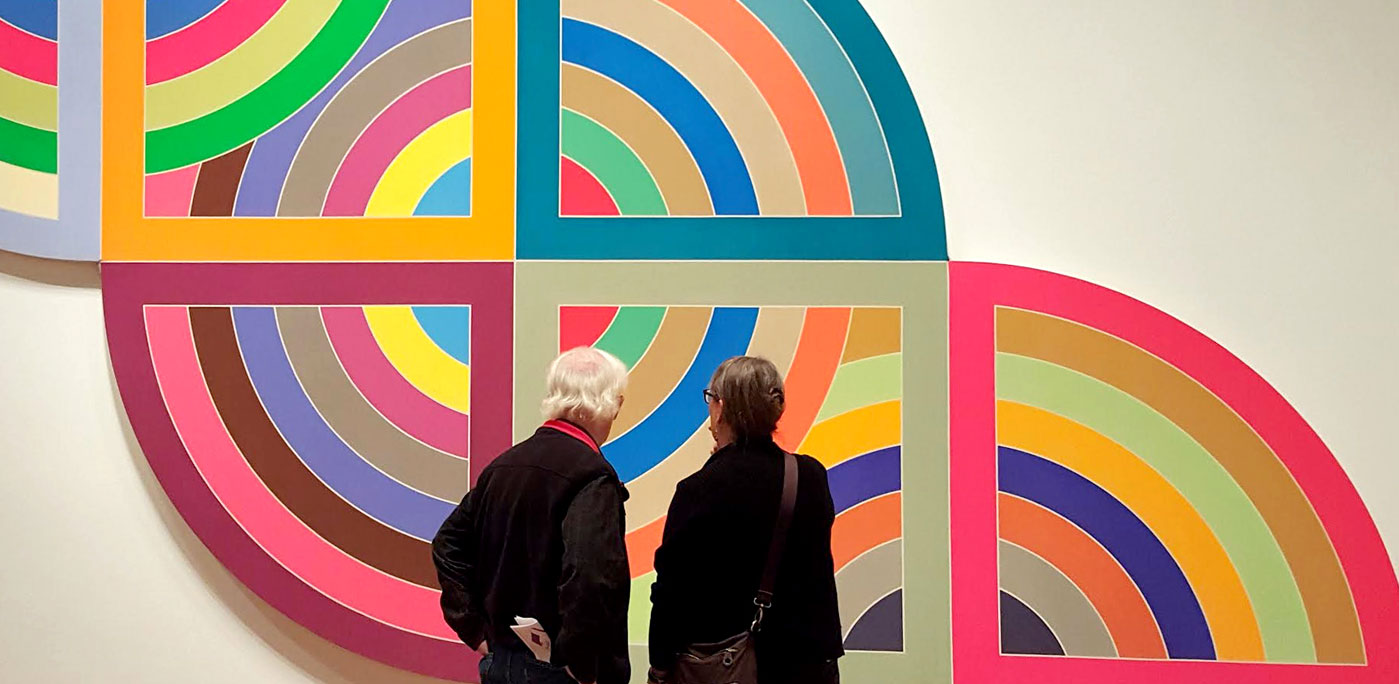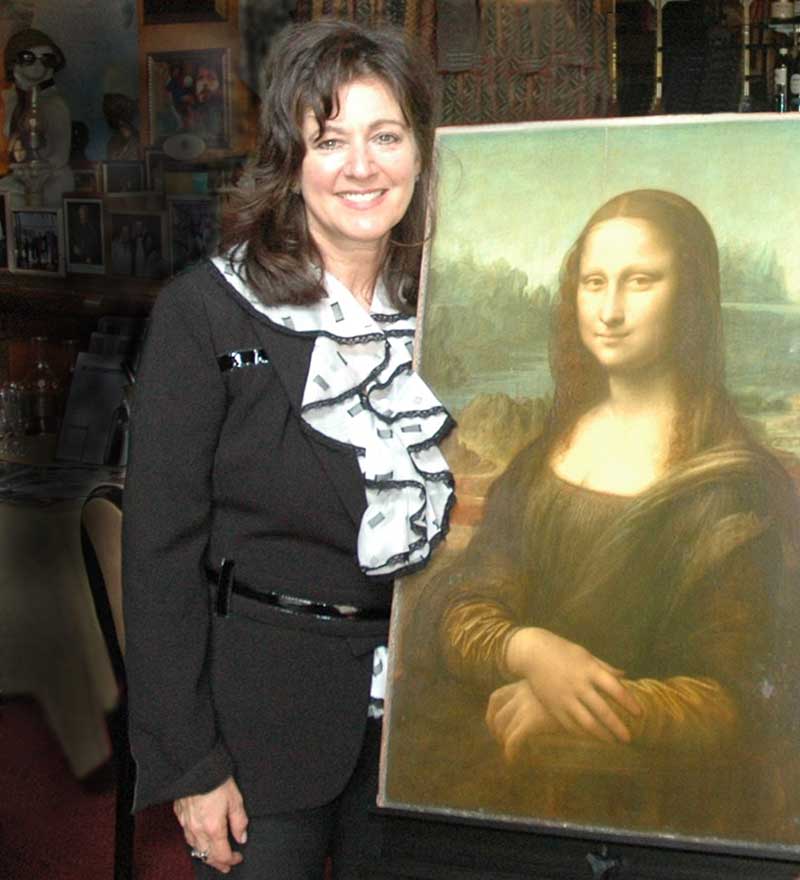“My painting is based on the fact that only what can be seen there, is there. It really is an object.”
~ Frank Stella
When we think of Italians and art, how many think of Minimalism, an art movement that appeared in the 1960s which embodied simplicity in content and form, intending to exclude signs of personal expression. Instead of Minimalism, some of us might associate Italians and Italian-Americans with traditional artisti, such as Michelangelo and Botticelli.
This contemporary Italian-American artist has been creating notable pieces of art for over six decades and the San Francisco Bay Area has a rare opportunity to view a retrospective of his stellar art at San Francisco’s de Young Museum through February 26, 2017. Although his larger outdoor public pieces will not be on display, you can see from these photographs the breadth of his unique style.
Frank Philip Stella was born May 12, 1936 in Massachusetts, to parents of Italian descent.
A first-generation Sicilian, his father was a gynecologist, and his mother attended fashion school and later became a landscape painter.
During the early 1950s, Stella attended Phillips Academy in Andover, where he studied painting with Patrick Morgan, then graduated from Princeton University in 1958 with a Bachelor of Arts degree in History. Although Princeton did not offer degrees in studio art, Stella self-taught while receiving valuable advice and encouragement from painter Stephen Greene and art historian William Seitz, both of whom taught at Princeton. It was in these early years at Princeton that Stella learned about, and was influenced by, the work of Jackson Pollock and Franz Kline.
In 1958, while in his early 20s, Stella moved to New York City and in just a few years was recognized for his innovative art, the creation of which has been his primary occupation ever since.
The artist continues to live and work in New York.
Stella’s first important group show was the 1959 Museum of Modern Art’s Sixteen Americans, an exhibition that established him as one of the most radical young artists working in the U.S. at that time. His notoriety grew with a groundbreaking series of 59 works called the Black Paintings (1958-1960). These paintings were created by penciling lines on blank canvases and rollering over with black enamel house paint leaving thin strips of unpainted canvas to create white lines. Stella is quoted as saying, “What you see is what you see,” about this new aesthetic.
The next series, begun in 1967 and completed in 1971, was the Protractor series of paintings based on bands of color, incorporating large, brightly colored curves and semicircles. He was living on the $75 a week he borrowed from legendary gallery owner Leo Castelli, but with the sale of the Protractor series, the young artist was able to eliminate this debt. Stella describes his work during this period by saying, “I have a gift for structure, and the strength of all the paintings I made in the sixties lay in their organization, their sense of what pictorial structure could be.”

In 1976, Stella was commissioned by BMW to paint a BMW 3.0 CSL for the second installment in the BMW Art Car Project. He says of this project, “The starting point for the art cars was racing livery. In the old days there used to be a tradition of identifying a car with its country by color. Now they get a number and they get advertising. It’s a paint job, one way or another. The idea for mine was that it’s from a drawing on graph paper. The graph paper is what it is, a graph, but when it’s morphed over the car’s form it becomes interesting, and adapting the drawing to the racing car’s form is interesting. Theoretically it’s like painting on a shaped canvas.”
Later works include block-long computer-generated murals, monumental sculptures and eccentric architectural models. The fact that Stella became a Professor of Poetry at Harvard University in 1983 is an indication of how literature influenced his art and his Had Gadya series is one of the most significant examples of this influence. This 1982-1984 series of 12 prints was inspired by folk songs sung following the Seder, a religious meal served in Jewish homes.
In the mid-1980s, Stella moved into three-dimensional art forms and in the 1990s he began creating free-standing sculpture and murals for public spaces. These included a 10,000 square foot mural for Toronto’s Princess of Wales Theatre.
He sometimes used objects from junkyards and various metals, including stainless steel and bronze, resulting in huge abstract shapes easily reaching 40 feet tall. Stella continues to innovate his art taking advantage of the latest advances in cutting-edge technology, from computer software designing three-dimensional images, to space-age metals fabricated for his corporate-sized sculptures.
Frank Stella’s art has been the subject of several retrospectives in the United States, Europe, and Japan and most recently at the de Young Museum in San Francisco. Don’t miss this intriguingly provocative exhibition. For more information visit the de Young website at https://deyoung.famsf.org/exhibitions/stella.






























